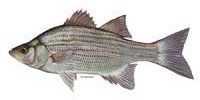The Chattanooga River is an important location in sport fishing thanks to its varied fish species. Some of the most popular include black bass, bluegill, sunfish, and catfish. But this river has a reputation for its large brown trout, plus the occasional good-sized brook and rainbow trout. Plan your trip here between April and June, when the hatches of aquatic insects are at their peak.
Some of the best Chattooga fishing can be experienced from the Burrells Ford Road to the North Carolina state line. If you’re heading to Chattooga River, drive along State Highway 28 which is near many well-marked trails that lead into the river. The State Highway 28 bridge is also a good choice for anglers. The section where the delayed harvest section begins is easy to find and has become a popular choice for fishers. If you’re looking for ground that’s less traveled, local hiking trails can lead you to more private fishing spots. You can also try the river crosses, such as the Chattahoochee National Forest lands and the Sumter National Forest area.
Chattooga River’s fish are out most from April to June when the aquatic insect population really starts to hatch. There’s plenty of shade to help stay off the summer heat. It does get crowded during the summer season. Since Chattooga’s wild brown trout get aggressive when it’s nearing spawning season, fishing in the fall isn’t a bad idea either. If you’re lucky and can get there on a warmer day, the winter season has fresh-stocked fish and fewer crowds.
Chattooga is full of Bream. Upstream you’ll find redbreast sunfish, while downstream you’ll find bluegill. For these, you’ll want small artificial baits that imitate jigs, like small spinners. Effective natural baits include crawfish, crickets, or worms rigged under a bobber.
There are black bass along the Chattooga, but they are usually less than a pound. Chattooga sees redeyes, spots and largemouths. Spots usually stay in the lower-portions of the river, while redeye’s are found easier in the upper-regions. Under most conditions, anglers get nice results when they use crawfish jigs and sink them deep into the water or around wood debris.
Chattooga has a respectable catfish population, averaging around a pound each. Sink your lines deep into the water and use live baits, worms, stink baits and chicken livers. The Chattooga catfish like to swim in the deeper portions of the river, and often stick outside of river bends.
White bass swim into Chattooga in the springtime. Their spawning season ranges from March to April. Outside of that timeframe, you might not find many white bass in this river. When white bass are around, try to fish them out with shad-patterned crankbaits and small jigs. Head to creek-mouths, especially below Lyerly Dam, for best results.
White Bass aren’t the only fish that migrate in during the spring; they’re joined by the striped bass. The striper population stays through the summer. Striped bass can reach anywhere from 1 to 25 pounds! Look for spring-fed pools around natural debris to find them. Striped Bass swim in cooler, flowing water near cover. Try using cut bait and live gizzard shad on a heavy rod.
Chattooga River Fish:
Chattooga River boat ramps:
The following boat ramps provide access to Chattooga River.


















